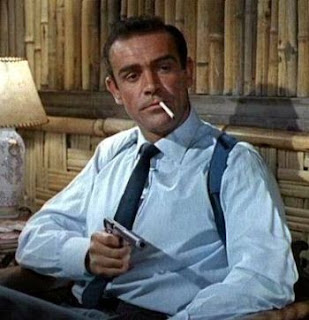Director: Marc Forster
Reviewed: 18 June 2013
jamesintexas rating--***
With AMC's "The Walking Dead" delivering movie quality apocalyptic zombies chasing the remnants of humanity every week, the zombie bar has been raised for a film like "World War Z," based on a best-selling novel starring one of the biggest stars in movies today. Marc Forster, the director of "Monster's Ball" and "Quantum of Solace" seems an odd choice for such a sprawling, globetrotting, effects-heavy adventure, yet despite its limitations, he carries the film across the finish line with a solid performance by Brad Pitt and effectively tense scenes.
The opening scene establishes Gerry Lane (Brad Pitt), retired United Nations field agent with experience in Kosovo and Liberia, as a househusband to Karin (Mireille Enos) and father of two young daughters in Philadelphia. Five minutes into the film, a traffic jam on Broad Street slowly ratchets up the suspense with tense motorists honking horns, cops racing by on motorcycles, and then, a far off explosion followed by a wave of violent, hyperkinetic zombies. The Lanes navigate the crowds, steal an RV, brave a grocery store under siege, and end up in a dilapidated housing project in Newark, awaiting a helicopter rescue from Gerry's old bosses at the U.N. who kept his number and conveniently need him back on the job. Now. A frightening chase sequence inside of the building plays out with only the red emergency lights and the flares that Karin drops showing the way up the stairs to the roof. Upon reuniting with the surviving leadership structure of the United Nations and the United States on an aircraft carrier 200 miles east of Manhattan, Gerry is tasked with reenlisting in exchange for his family's protection, as well as ordered to help the scientists find Patient Zero, the epicenter of the outbreak, who is rumored to be in South Korea. Find the patient; find the best way to make a vaccine to fight the apocalypse. Swiftly, Gerry travels to South Korea, Israel, and Wales in search of the best chance to save humanity.
The construction of the film eschews the novel's shifting global politics and sense of catastrophic camaraderie for the following of our single protagonist. Gerry's relentlessness along the way fleshes him out as likable and realistic. He knows solving this plague is the only hope he has to reunite with his family. His stakes could not be higher, and Pitt gives a fine minimalist, physical performance, though the film's PG-13 rating prevents him from being covered with the sort of splatter that comes from wielding axes, crowbars, and bats at close range against the undead. At one point, Gerry's crowbar is nonsensically clean. And that same PG-13 rating prevents the level of graphic carnage shown in other zombie films like "28 Days Later" or shows like "The Walking Dead," unyielding in their gore. We see the zombies, but Forster emphasizes long shots from a distance with swarms of them climbing over each other, underscoring shots of insects and animal pack behavior used in the opening montage.
While establishing Gerry as a loving father and husband, the film unfortunately delegates Mireille Enos's character to making the bed and waiting for a daily phone call from her husband. Somewhere a decision was made to sideline her so that she can be the rock for their two children and one adopted orphan, and neglect the telling of her story of survival within the precarious safety of the government. It is a lost opportunity. Pitt’s reunion with David Morse as an imprisoned ex-C.I.A. agent in South Korea serves as a nod to their work in the great apocalyptic film "Twelve Monkeys." But in general, "World War Z's" story is told in movement, not dialogue. The best scene in the film, a scene on the airplane, encapsulates the sheer terror of the lack of control and lack of escape, and touches on collective post-9-11 fears without being heavy-handed. The climax set in the World Health Organization offers a sterile, white environment that quickly becomes a maze for Jerry to wander amidst zombies, and the final showdown is striking for its simple bravery.
I wish that the film was more intelligent, I wish that the film took on more of the ambitious moments of its source material, and I wish that more thought had been put into stitching the story together. The ending shows vast other untold stories as well as unused performances. Yet, Forster and the three credited screenwriters (plus an additional screen story credit and the original novel by Max Brooks) assemble a series of fifteen-minute chapters that build tension, crest, and then skip to another location. Perhaps the story better fits our twelve to fifteen hour television miniseries cycle, but what "World War Z" has to offer is surprisingly powerful and suspenseful.


















